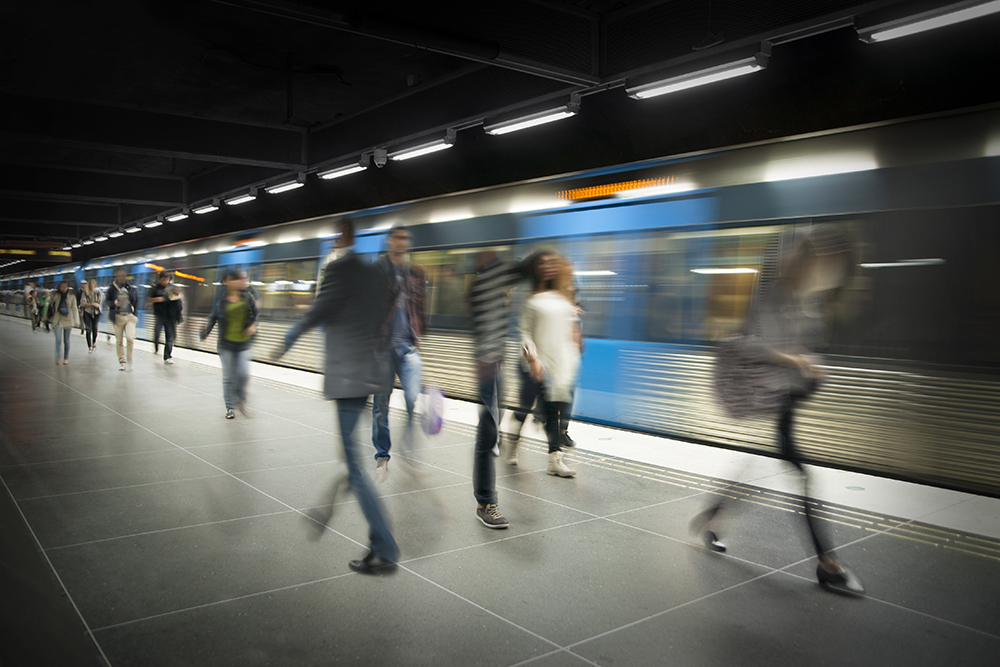
It’s currently difficult not to associate public transport with cancellations and delays. All too often, we find ourselves frustrated at the bus shelter, train platform or tram stop, continually refreshing our smartphones for a travel update while hoping a service will arrive to take us to our destination – whether that’s to work, the high street or a friend’s house.
Recent statistics suggest this has caused a widespread reduction of trust in public transport services. In Britain, there has been a 20% decline in bus passenger journeys compared to pre-pandemic levels in 2018/19 – when services were already at their lowest levels of usage since the 1980s – which suggests the decline isn’t solely caused by the growth of remote working.
According to the US Census, public transportation only accounts for a mere 2% of trips in urban areas, which has resulted in the average American wasting 54 hours per year in traffic.
Meanwhile, rail travel has decreased in Europe, with the number of passengers in Spain dropping from around 600,000 in 2017 to around 400,000 in 2021, while the number of passengers in Italy fell from around 865,000 to around 490,000 over the same period, according to data from Eurostat.
Without access to dependable routes, people will continue to lose faith in public transport services and our cities will remain congested.
Rising to the challenge
This decline is cause for concern given that the public transport sector has a crucial role to play in the fight against climate change. Successfully winning back passenger trust is vital if the public transport industry is to fulfil its potential when it comes to reducing emissions and making our cities more liveable.
At the same time, the cost-of-living crisis is prompting more people to travel via public transport, with research finding almost half (41%) of UK adults plan to use the bus more often in a bid to save money.
This is a genuine opportunity to encourage people to re-embrace public transport, so finding innovative ways to drive efficiency on our networks is more important than ever before. Authorities and operators must rise to the challenge through a smarter approach to technology and leveraging data.
Inspired by retail
Other industries, particularly retail, have demonstrated what can be achieved through making effective use of digital transformation and new technology to enhance the user experience. Compare this to bus services in particular, and it can feel like progress has stagnated and public transport is lagging 10 years behind other industries.
Advanced self-checkout processes or same-day delivery, in which a once-futuristic drone will deliver your package within hours of clicking the ‘pay now’

button, appear far ahead of developments within the public transport sector. These ‘on-demand’ services speak to the flexibility and immediacy expected in a modern customer experience.
We can also look towards retail’s rapid adoption of digital and analytical technologies like learning to enhance productivity and deliver personalised customer experiences at scale. Organisations that successfully integrate these new technologies open the door to improved customer retention and cost efficiencies.
Thinking globally
Public transit data has huge power to shape the cities we live in. We’re already seeing more open data and collaboration initiatives doing well across public and private entities. Public transportation in Southeast Asia, for instance, is celebrated for its efficient, punctual, and clean network infrastructure. As such, it’s worth looking at what operators are doing differently in places such as Japan, China and South Korea.
Indeed, South Korea’s capital, Seoul, was recently awarded the Smart City 2022 title, receiving special recognition for its Smart Seoul platform, which promotes digital inclusion policies across communication, mobility, education, safety and tech utilisation.
Similarly, Tokyo recently topped a list of the world's future-ready cities, reflecting the city’s ability to adapt effectively to evolving community needs.
These initiatives take aim at today’s biggest challenges: sustainability and the cost-of-living crisis. The ability to draw real insights from all of this information is an opportunity for our industry to build trust in public transport and shape our communities.
A data-driven approach
Learning from operators in Asia will involve turning to simple technology that enables local authorities and transport operators to adopt a data-driven approach. Access to accurate data and easy-to-use analytics tools will support them in better managing their transport networks. This will enable the more effective use of existing real-time information, allowing transport operators to give their entire teams full visibility into how the network is performing, identify areas of improvement and focus their efforts on addressing these pain points for passengers. Authorities, operators, and private entities should work together to provide a better, more reliable transportation service.

Operators will face challenges when modernising their approach, from inflationary pressures and driver shortages to changing travel habits from flexible working. The good news is that at Snapper Services, we believe these challenges can be met by leveraging existing data and by implementing the correct analytical tools. In this way, operators can seek to improve their overall transportation network performance and boost passenger numbers through a focus on frequency, punctuality, and reliability. Cooperation across all relevant parties and a drive to regain passenger trust in public transport will be an important first step. Without data and digital transformation, the industry will remain behind schedule on its journey to operating successfully by fully meeting the needs of today’s passengers.
About the Author:
Jon Salmon is executive director of Snapper Services UK





